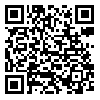Islamic Azad University of Chalous
Abstract: (129 Views)
The sense of smell is one of the most frequently employed senses in Rumi's thought and language for illustrating both the material and spiritual dimensions of human existence. From a physiological perspective concerning the material dimension of humans, Rumi considers the external sense of smell to be among the cognitive tools humans utilize to communicate and interact with the external world, which, in connection with inner faculties and the human brain, constitutes one level of human perception. Conversely, from an epistemological perspective addressing the spiritual dimension of humans, Rumi regards the inner sense of smell as belonging to the existential and spiritual levels of humanity, which, through the removal of veils, serves as a source of divine inspiration from the realm of Truth and Reality, motivating the spiritual seeker toward their goal. Using an analytical method to examine Rumi's views on the sense of smell reveals that Rumi addresses this sense within both ontological and epistemological frameworks, attempting through the art of synesthesia to engage the audience in his epistemological experience. He aims to transform and elevate the external sense of smell to the inner sense of smell, so that through this spiritual channel, one may reach the source of worldly scents, which exists in the placeless realm of Truth and Reality.
Article number: 11
References
1. The Holy Quran.
2. Pournamdarian, T. (1996). Symbolic Stories and Symbolism in Persian Literature. Tehran: Scientific and Cultural Publications.
3. Khodapanahi, M. K. (2001). Physiological Psychology. 1st ed. Tehran: SAMT Publications.
4. Kharazmi, K. H. (2005). Jawahir al-Asrar va Zawahir al-Anwar [Jewels of Secrets and Manifestations of Lights]. Ed. M. J. Shariat. 1st ed. Tehran: Asatir Publications.
5. Zarrinkoub, A. (2010). Bahr dar Koozeh [Sea in a Jug]. 14th ed. Tehran: Elmi Publications.
6. Zarrinkoub, A. (2010). Nardban-e Shekasteh [Broken Ladder]. 4th ed. Tehran: Sokhan Publications.
7. Zamani, K. (2011). Comprehensive Commentary on Masnavi-e Manavi (Fifth Book). 17th ed. Tehran: Ettelaat Publications.
8. Sappington, A. E. (2011). Mental Health. Trans. H. R. Hosseini Baravati. 8th ed. Tehran: Ravan Publications.
9. Shayegan, D. (1977). Religions and Philosophical Schools of India. 2nd ed. Tehran: Amirkabir Publications.
10. Shafiei Kadkani, M. R. (2013). Language of Poetry in Sufi Prose: An Introduction to the Stylistics of Mystical Perspective. 1st ed. Tehran: Sokhan Publications.
11. Attar Neyshabouri, F. M. (1997). Divan of Attar. Ed. B. Forouzanfar. 2nd ed. Tehran: Negah Publications.
12. Fotouhi, M. (2012). Stylistics: Theories, Approaches, and Methods. Tehran: Sokhan Publications.
13. Carlson, N. R. (2007). Foundations of Physiological Psychology. Trans. M. Pazhouhan. 6th ed. Isfahan: Ghazal Publications.
14. Guyton, A. C., & Hall, J. E. (2003). Medical Physiology. Trans. F. Shadan & A. Sedighi. Vol. 2. 3rd ed. Tehran: Chehr Publications.
15. Grishaymer, A. M. W. (1975). Human Physiology. Trans. F. Shadan et al. 1st ed. Tehran: Payam Publications.
16. Lewis, F. D. (2011). Rumi - Past and Present, East and West. Trans. H. Lahouti. 4th ed. Tehran: Namak Publications.
17. Mobasheri, M. (2003). "Unity of Faculties in Rumi's Poetry" (Commentary on a Verse from Masnavi). Al-Zahra University Journal, 13th and 14th Year, No. 48-49, pp. 181-211.
18. Rumi, J. M. (2006). Fihi Ma Fihi [In It What Is in It]. Ed. B. Forouzanfar. Tehran: Amirkabir Publications.
19. Rumi, J. M. (1999). Kulliyat-e Shams-e Tabrizi [Complete Works of Shams Tabrizi]. Ed. B. Forouzanfar. 1st ed. Tehran: Peyman Publications.
20. Rumi, J. M. (1984). Masnavi-e Manavi [Spiritual Couplets]. Ed. R. Nicholson. 1st ed. Tehran: Amirkabir Publications.
21. Haywood, K. M. (2006). Life Span Motor Development. Trans. M. Namazizadeh & M. A. Aslankhani. 7th ed. Tehran: SAMT Publications.
Send email to the article author
| Rights and permissions | |
 |
This work is licensed under a Creative Commons Attribution-NonCommercial 4.0 International License. |




